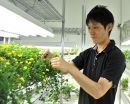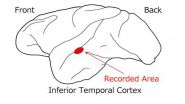(Press-News.org) Many patients with advanced, incurable cancer do not receive any palliative care, reveals new research to be presented later this month at the ESMO 2014 Congress in Madrid, Spain, 26-30 September. The findings are astonishing as they come at the same time as 15 new oncology centres in Europe, Canada, South America and Africa are being awarded the prestigious title of 'ESMO Designated Centre of Integrated Oncology and Palliative Care.'
SR I Dr Alexandru Grigorescu, medical oncology consultant at the Institute of Oncology Bucharest, Romania, member of the ESMO Palliative Care Working Group, said: "The integration of palliative care in oncology is a challenge. This is especially the case for countries with few resources, where the healthcare budget is low, with insufficient palliative care specialists and some drugs are unavailable as hospitals do not have the funds to buy them."
"ESMO brings a new approach to palliative care, namely by integrating it with specific anticancer treatment conducted in medical oncology departments," continued Grigorescu. "In this context, we conducted a study to assess palliative care needs and delivery in patients with advanced, incurable cancer."1
The research was conducted in five Romanian and one Swiss institutes. It found that 17% of patients received no palliative care interventions and 26% did not have their symptoms addressed. One-fifth of patients wanted to discuss end-of-life issues with a healthcare professional, but it occurred in just 15% of cases. Only 10% of patients had a care plan.
Grigorescu said: "Our study shows that there are significant gaps in the delivery of palliative care for patients with advanced, incurable cancer. Our findings argue for healthcare decision-makers to increase the budget for palliative care. We hope the study will make a point about the importance of treating patients during this period. In Romania we do not have an independent speciality of palliative care, so it should be the responsibility of medical oncologists."
ESMO promotes good practice in palliative care for cancer patients through –among others-- the ESMO Designated Centres of Integrated Oncology and Palliative Care accreditation programme.2 The designation recognises that centres have achieved a high standard of integration of medical oncology and palliative care and is valid for three years.
Prof Nathan Cherny, former chair of the ESMO Palliative Care Working Group and initiator of the Designated Centres programme, said: "The ESMO Designated Centres programme is the premier initiative worldwide for providing incentives and a structured model to enable centres to develop integrated programmes in oncology and palliative care. The ESMO designation is widely recognised and indicates that the centre has made philosophical and infrastructural commitments to meet the physical and psychological challenges of patients and families with advanced cancers."
Cherny, an oncologist and palliative medicine specialist who is chair of humanistic medicine at Shaare Zedek Medical Centre, Jerusalem, Israel, added: "The designation also indicates that the centre is not only providing a clinical service but that it has programmes developed both to push the boundaries of knowledge through research and to teach the essential skills required for the provision of palliative care to cancer patients."
Since the programme began in 2003, the Designated Centre accolade has been awarded to 175 centres, of which 25 are in resource and/or regulation restrictive countries. In addition to the 15 new centres joining the prestigious group this year, 44 centres have achieved reaccreditation.
Commenting on ESMO's activities in the field of palliative care, Cherny said: "ESMO has a 15 year history of a commitment to the improvement of the quality of palliative care for cancer patients in Europe and around the world. ESMO was the first major oncology organisation to develop a dedicated working group to this task, and to develop policies for individual clinicians, for cancer centres and for the training of oncologists. ESMO has researched its own membership to identify deficits in knowledge and practice and has developed educational tools to address the shortcomings that were identified."
ESMO has been a leading player in identifying barriers to the availability and accessibility of essential pain relieving medication in Europe and in the developing world. Cherny said: "The findings from the Global Opioid Policy Initiative (GOPI) study3 have major policy implications that are relevant to over five billion of the world's population. We are working with our partners to promote legislative reforms to guarantee that all patients have access to affordable, effective pain medication to relieve the tragedy of needless suffering caused by undertreated cancer pain."
To promote better care for patients with advanced cancer ESMO published a guide for patients and their families4 and a companion volume for oncologists5. The ESMO Guidelines Working Group is developing evidence-based clinical practice guidelines to assist oncologists in the provision of palliative care. This month three new guidelines have been published.6 Cherny said: "Together these publications help patients with advanced and incurable cancer ask appropriate questions and have meaningful discussions with their oncologist that lead to coordinated and holistic care. The patient book has been translated into 11 languages and is an invaluable resource."
"With its strong commitment to research, best practice and palliative care, ESMO has become a key partner in palliative care initiatives," added Rolf A. Stahel, ESMO President.
Cherny concluded: "Palliative care has been a central part of ESMO's work in research, education and public health policy initiatives both in Europe and around the world. This year's new and reaccredited ESMO Designated Centres will ensure that more patients with cancer receive appropriate, high quality palliative care along with the best of their cancer care - and this makes a difference."
INFORMATION:
Notes to Editors
1 Abstract 1347P, Poster Display session, 28.09.2014, 12:45 - 13:45, Poster area
2 ESMO's Designated Centres programme: http://www.esmo.org/Patients/Designated-Centres-of-Integrated-Oncology-and-Palliative-Care
3 ESMO Global Opioid Policy Initiative (GOPI): http://www.esmo.org/Policy/Global-Opioid-Policy-Initiative
4 A guide for patients with advanced cancer: Getting the most out of your oncologist: http://www.esmo.org/Patients/Getting-the-Most-out-of-Your-Oncologist
5 User's manual for oncology clinicians: http://oncologypro.esmo.org/Publications/User-s-Manual-for-Oncology-Clinicians
6 ESMO Clinical Practice Guidelines for the management of refractory symptoms at the end of life and the use of palliative sedation. N. I. Cherny, on behalf of the ESMO Guidelines Working Group. Ann Oncol 2014 25: iii143-iii152.
ESMO Clinical Practice Guidelines on palliative care: advanced care planning. D. Schrijvers, N. I. Cherny, on behalf of the ESMO Guidelines Working Group. Ann Oncol 2014 25: iii138-iii142.
Bone health in cancer patients: ESMO Clinical Practice Guidelines. R. Coleman, J. J. Body, M. Aapro, P. Hadji, J. Herrstedt, on behalf of the ESMO Guidelines Working Group. Ann Oncol 2014 25: iii124-iii137.
About the European Society for Medical Oncology
The European Society for Medical Oncology (ESMO) is the leading European professional organisation committed to advancing the specialty of medical oncology and promoting a multidisciplinary approach to cancer treatment and care.
ESMO's mission is to advance cancer care and cure through fostering and disseminating good science that leads to better medicine and determines best practice.
The ESMO international community counts more than 9,000 oncology professionals sharing best practices and the latest know-how in cancer treatment and care.
ESMO's scientific journal, Annals of Oncology, ranks among the top 10 clinical oncology journals worldwide.
To find out more about ESMO, please visit: http://www.esmo.org
Patients with advanced, incurable cancer denied palliative care
Findings presented at the ESMO 2014 Congress
2014-09-19
ELSE PRESS RELEASES FROM THIS DATE:
Graphene sensor tracks down cancer biomarkers
2014-09-19
An ultrasensitive biosensor made from the wonder material graphene has been used to detect molecules that indicate an increased risk of developing cancer.
The biosensor has been shown to be more than five times more sensitive than bioassay tests currently in use, and was able to provide results in a matter of minutes, opening up the possibility of a rapid, point-of-care diagnostic tool for patients.
The biosensor has been presented today, 19 September, in IOP Publishing's journal 2D Materials.
To develop a viable bionsensor, the researchers, from the University of ...
Simple test can help detect Alzheimer's before dementia signs show: York U study
2014-09-19
TORONTO, Sept. 19, 2014 — York University researchers say a simple test that combines thinking and movement can help to detect heightened risk for developing Alzheimer's disease in a person, even before there are any telltale behavioural signs of dementia.
Faculty of Health Professor Lauren Sergio and PhD candidate Kara Hawkins who led the study asked the participants to complete four increasingly demanding visual-spatial and cognitive-motor tasks, on dual screen laptop computers. The test aimed at detecting the tendency for Alzheimer's in those who were having cognitive ...
Shrink-wrapping spacesuits
2014-09-19
For future astronauts, the process of suiting up may go something like this: Instead of climbing into a conventional, bulky, gas-pressurized suit, an astronaut may don a lightweight, stretchy garment, lined with tiny, musclelike coils. She would then plug in to a spacecraft's power supply, triggering the coils to contract and essentially shrink-wrap the garment around her body.
The skintight, pressurized suit would not only support the astronaut, but would give her much more freedom to move during planetary exploration. To take the suit off, she would only have to apply ...
New hadrosaur noses into spotlight
2014-09-19
Call it the Jimmy Durante of dinosaurs – a newly discovered hadrosaur with a truly distinctive nasal profile. The new dinosaur, named Rhinorex condrupus by paleontologists from North Carolina State University and Brigham Young University, lived in what is now Utah approximately 75 million years ago during the Late Cretaceous period.
Rhinorex, which translates roughly into "King Nose," was a plant-eater and a close relative of other Cretaceous hadrosaurs like Parasaurolophus and Edmontosaurus. Hadrosaurs are usually identified by bony crests that extended from the skull, ...
Researchers discover new gene responsible for traits involved in diabetes
2014-09-19
A collaborative research team led by Medical College of Wisconsin (MCW) scientists has identified a new gene associated with fasting glucose and insulin levels in rats, mice and in humans. The findings are published in the September issue of Genetics.
Leah Solberg Woods, Ph.D., associate professor of pediatrics at MCW and a researcher in the Children's Hospital of Wisconsin Research Institute, led the study and is the corresponding author of the paper.
The authors of the paper identified a gene called Tpcn2 in which a variant was associated with fasting glucose levels ...
Don't cry wolf: Drivers fed up with slowing down at inactive roadwork sites
2014-09-19
The results of the QUT Centre for Accident Research & Road Safety - Queensland (CARRS-Q) study have been presented at the Occupational Safety in Transport Conference (OSIT) which is being held on the Gold Coast and finishes today.
Dr Ross Blackman, a CARRS-Q road safety researcher, said speed limit credibility was being put at risk when reduced speed limits and related traffic controls remained in place at inactive roadwork sites.
"It's seen as crying wolf. If people are asked to slow down at roadwork sites but find there is no roadwork being undertaken they become ...
Long-distance communication from leaves to roots
2014-09-19
Leguminous plants are able to grow well in infertile land, and bear many beans that are important to humans. The reason for this is because most legumes have a symbiotic relationship with bacteria, called rhizobia, that can fix nitrogen in the air and then supply the host plant with ammonia as a nutrient.
The plants create symbiotic organs called nodules in their roots. However, if too many root nodules are made it will adversely affect the growth of the plants, because the energy cost of maintaining excessive nodules is too large. Therefore legumes must have a mechanism ...
Lymphatic fluid used for first time to detect bovine paratuberculosis
2014-09-19
Paratuberculosis, also known as Johne's disease, is caused by the bacterium Mycobacterium avium subspecies paratuberculosis (MAP). In Austria, there is a legal obligation to report the disease. Paratuberculosis mainly affects ruminants and causes treatment-resistant diarrhoea and wasting among affected animals. The disease can cause considerable economic losses for commercial farms. The animals produce less milk, exhibit fertility problems and are more susceptible to other conditions such as udder inflammation.
To date there has been no treatment for paratuberculosis. ...
Neurons express 'gloss' using three perceptual parameters
2014-09-19
Japanese researchers showed monkeys a number of images representing various glosses and then they measured the responses of 39 neurons by using microelectrodes. They found that a specific population of neurons changed the intensities of the responses linearly according to either the contrast-of-highlight, sharpness-of-highlight, or brightness of the object. This shows that these 3 perceptual parameters are used as parameters when the brain recognizes a variety of glosses. They also found that different parameters are represented by different populations of neurons. This ...
Environmental pollutants make worms susceptible to cold
2014-09-19
Imagine you are a species which over thousands of years has adapted to the arctic cold, and then you get exposed to a substance that makes the cold dangerous for you.
This is happening to the small white worm Enchytraeus albidus, and the cold provoking substance, called nonylphenol, comes from the use of certain detergents, pesticides and cosmetics.
Nonylphenol is suspected of being a endocrine disruptor, but when entering the worm it has another dangerous effect: It inhibits the worm's ability to protect the cells in its body from cold damage.
Enchytraeus albidus ...
LAST 30 PRESS RELEASES:
Making lighter work of calculating fluid and heat flow
Normalizing blood sugar can halve heart attack risk
Lowering blood sugar cuts heart attack risk in people with prediabetes
Study links genetic variants to risk of blinding eye disease in premature infants
Non-opioid ‘pain sponge’ therapy halts cartilage degeneration and relieves chronic pain
AI can pick up cultural values by mimicking how kids learn
China’s ecological redlines offer fast track to 30 x 30 global conservation goal
Invisible indoor threats: emerging household contaminants and their growing risks to human health
Adding antibody treatment to chemo boosts outcomes for children with rare cancer
Germline pathogenic variants among women without a history of breast cancer
Tanning beds triple melanoma risk, potentially causing broad DNA damage
Unique bond identified as key to viral infection speed
Indoor tanning makes youthful skin much older on a genetic level
Mouse model sheds new light on the causes and potential solutions to human GI problems linked to muscular dystrophy
The Journal of Nuclear Medicine ahead-of-print tip sheet: December 12, 2025
Smarter tools for peering into the microscopic world
Applications open for funding to conduct research in the Kinsey Institute archives
Global measure underestimates the severity of food insecurity
Child survivors of critical illness are missing out on timely follow up care
Risk-based vs annual breast cancer screening / the WISDOM randomized clinical trial
University of Toronto launches Electric Vehicle Innovation Ontario to accelerate advanced EV technologies and build Canada’s innovation advantage
Early relapse predicts poor outcomes in aggressive blood cancer
American College of Lifestyle Medicine applauds two CMS models aligned with lifestyle medicine practice and reimbursement
Clinical trial finds cannabis use not a barrier to quitting nicotine vaping
Supplemental nutrition assistance program policies and food insecurity
Switching immune cells to “night mode” could limit damage after a heart attack, study suggests
URI-based Global RIghts Project report spotlights continued troubling trends in worldwide inhumane treatment
Neutrophils are less aggressive at night, explaining why nighttime heart attacks cause less damage than daytime events
Menopausal hormone therapy may not pose breast cancer risk for women with BRCA mutations
Mobile health tool may improve quality of life for adolescent and young adult breast cancer survivors
[Press-News.org] Patients with advanced, incurable cancer denied palliative careFindings presented at the ESMO 2014 Congress




